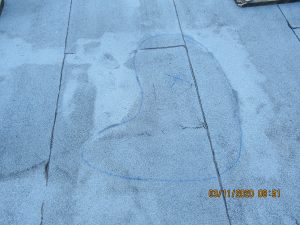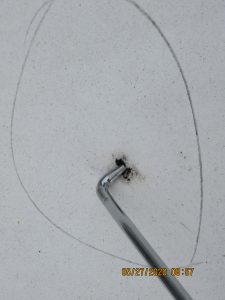Roof inspections are important services to be performed in order to determine the root causes of leaks and other building issues. These investigations lead to recommendations for potential repairs to prolong the lifespan of the roof system or consider a full replacement. A conventional roof membrane system is expected to last between 10 and 25 years, depending on the product system.

Regular roof inspections are a critical aspect of building maintenance, though it is not common for roof system maintenance to be performed during the first five years after installation. Typically, the approach to proactive maintenance from most of our clients does not occur until a system is beyond the five-year mark; however, the first five years are very important to prevent unnecessary premature failure.
For some building owners, it may seem trivial to have semi-annual roof inspections performed within years one to four. As building envelope consultants, we have found roof systems within five years of installation with voided warranties due to neglect that could have been prevented through regular roof inspections. Premature failures often begin with small-scale maintenance issues, but may become roof-wide failures if interior leaks compromise the roof system. After a significant investment in a new roof system, a warranty on its own will not protect the owner from the responsibility of proper maintenance.
One of the biggest misconceptions of a new roof system is that the manufacturer warranty and the contractor guarantee will protect the owner from the out-of-pocket costs of any failure. However, most warranties and guarantees have clauses that require semi-annual inspections of all components of the roof system and visual inspections of specific components after severe wind or storms, as well as prompt reporting of any suspected water infiltration. Most of these inspections can be performed by the onsite facility engineer or facilities manager, but the full component inspections should be reviewed by a third-party engineer/architect with thorough knowledge of the roof assembly that has been installed. A third-party engineer/architect will ensure that all common issues are identified, as well as potential roof irregularities that may require repair.
Some of the most common deficiencies observed in roof systems are:

- Two- to three-year-old single-ply roofs with punctures in the roof membrane that were identified in the mfg. punch list but never corrected by the installer
- Two- to three-year-old single-ply roofs with details that were not installed according to the manufacturer’s specifications and guidelines
- Two- to three-year-old SBS-modified bitumen roofs with blisters in the membrane due to improper installation of the membrane adhesive
- Three- to four-year-old SBS-modified bitumen roof systems on new buildings where the mechanical contractor installed flashings that are incompatible with the existing roofing system or were improperly installed
- Three- to four-year-old single-ply roof systems and SBS roofs with foot traffic patterns that do not match the walking pad layout which leads to unusual wear, premature deterioration, and sometimes premature failure
- Three- to four-year-old single-ply roof systems where new equipment was installed with improper roof curb heights
All of these deficiencies can be easily addressed when caught early in the life of the roof system. If these issues are not promptly and properly addressed, the building owner can expect potentially significant repair costs and expenses that may be incurred from damage at the building interiors. The cost of semi-annual inspections should not be viewed as a financial burden, but rather a necessary, small investment to ensure that the roof system meets or exceeds the intended lifespan.
Once a decision is made to have regular roof inspections performed, we recommend that owners make sure that their building envelope professional verifies the roof assembly details and reports any abnormal conditions to the roof manufacturer per the warranty guidelines. We recommend that a building owner or manager make sure that the following conditions are reported:
- Unusual wear at the roof membrane surface (typical due to excessive foot traffic)
- Signs of distress in the roof membrane (wrinkles and blisters)
- Post-construction mechanical penetrations through the roof membrane (punctures and cuts)
- Damage to the roof membrane due to abrasion (ex: chemical spill on the roof membrane)
- Lack of proper membrane adhesion (loose field membrane, including open seams)
The best way to protect what is inside your building is to ensure the integrity of the building enclosure is intact. With proper maintenance, the life of a typical roof system can be extended by 10-plus years, leading to higher expected returns for the building owner.
